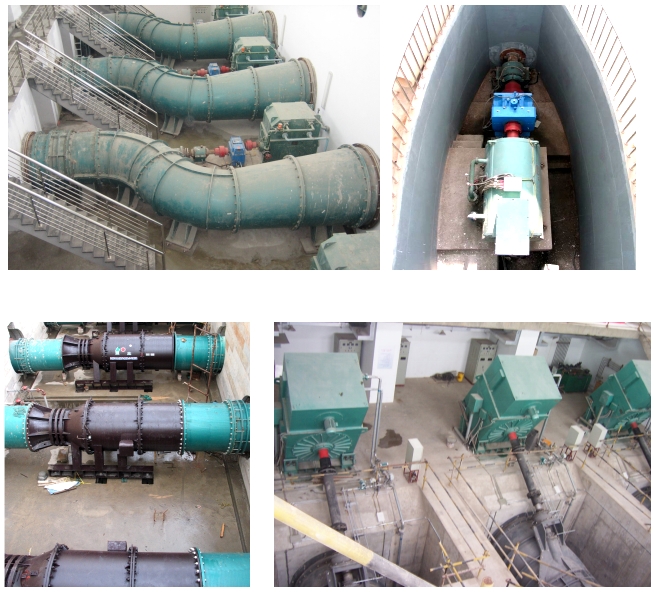In water diversion, flood control and drainage, sewage treatment, farmland irrigation, environmental protection, etc., low-lift, large-flow pump-gate water conservancy projects are widely used. Usually, most of the low-speed pumps used in such water conservancy projects are low-speed pumps below 500r/min. Commonly used water pump motors include asynchronous motors, synchronous motors and special submersible motors. However, many of the low speeds are achieved by relying on high-speed motors connected to reducers. Since the reducers themselves have mechanical losses and are easy to wear, this type of low-speed pump system also results in low efficiency, high power consumption, high noise and vibration, large volume, and high maintenance.
However, permanent magnet synchronous motors have unparalleled application advantages in such water conservancy engineering applications. The permanent magnet synchronous motor is designed to have a low speed and can directly drive the impeller, eliminating the need for a reducer structure. The overall system efficiency is high, the noise and vibration are small, and the operation is safer and more reliable. It cooperates with the permanent magnet special control system to form a drive system, relying on the huge advantages of energy conservation and environmental protection. , has become a new trend in the development of low-speed pumps.
Traditional applications: Asynchronous motor + reducer structure
The asynchronous motor + reducer structure has a long axial length, a large volume, and is difficult to install. During normal use, the reducer gears are easy to wear, require a lot of maintenance, and have high maintenance costs. Especially when used in closed environments such as cross-flow pumps, they occupy pipelines. The space is large, affecting the pipeline flow, and making repair and maintenance difficult.
At the same time, the asynchronous motor rotates at high speed to drive the reducer. The front stage of the reducer has high speed, large mechanical wear, high failure rate, and low transmission efficiency. The efficiency of the asynchronous motor is about 92%, and the efficiency of the reducer is only 90%. The system efficiency is low and the power consumption is large. , which is not in line with the industrial trend of equipment energy conservation and environmental protection.
Low-speed asynchronous motor structure
Although the low-speed asynchronous motor adopts a direct drive structure and eliminates the need for a reducer, it is subject to limitations in speed, technology, etc., and requires the use of a multi-pole design, resulting in reduced motor efficiency and power factors, a high proportion of reactive power, and large power consumption, poor energy saving effect.
Synchronous motor structure
The rotor excitation part of the synchronous motor needs to be equipped with commutators, brushes and other devices. It has a complex structure, many wearing parts, low operating reliability, and high equipment maintenance costs.
Product Description
The high-power permanent magnet drive system for low-speed pumps produced by our company consists of a high-power permanent magnet motor for low-speed pumps and a special control system for permanent magnet motors. The system can be professionally customized according to the parameters and size requirements provided by the customer.
The product adopts the latest electromagnetic optimization design and structural plan, with good motor performance and compact structure. It has the advantages of small size, lightweight, high torque density, high-efficiency power factor, good moisture-proof performance, low noise, low vibration, easy installation, maintenance-free, and high-cost performance. It is suitable for various low-lift and large-flow water conservancy engineering applications.
Compared with traditional asynchronous motors, the energy-saving effect is better, the operation is safer and more reliable, and the installation and maintenance are simple.
Product Introduction
It is equipped with a special control system for low-speed and high-power permanent magnet motors, which can achieve smooth control of the motor speed, smooth start, low current, and simple operation.
The core of its control system is the IGBT semiconductor switching device and its drive module. It uses mature high-performance devices with a large current margin. After repeated experiments and strict testing, it is safe, reliable, and has a low failure rate.
An operation screen is provided to facilitate the setting and status indication of various functions. Parameters such as output speed and motor current can be monitored at any time, and fault records and all operation records can be queried at any time. The operation interface is intuitive, clear, and easy to use.
Rich interfaces facilitate equipment operation and management, with higher centralized control and automation.
Product Range
| Rpm range | Power range | Voltage range | Flow range | Installation dimensions and structure |
| 10~500r/min | 100KW~3000KW | 380~10000V | 1.5m3/S~30m3/S | According to customer requirements |
Product advantages
1. Energy saving
However, the asynchronous motor system with the same specifications has low efficiency, and the reducer efficiency is only about 90%. There are mechanical losses and failure points, which greatly reduce the overall efficiency of the equipment.
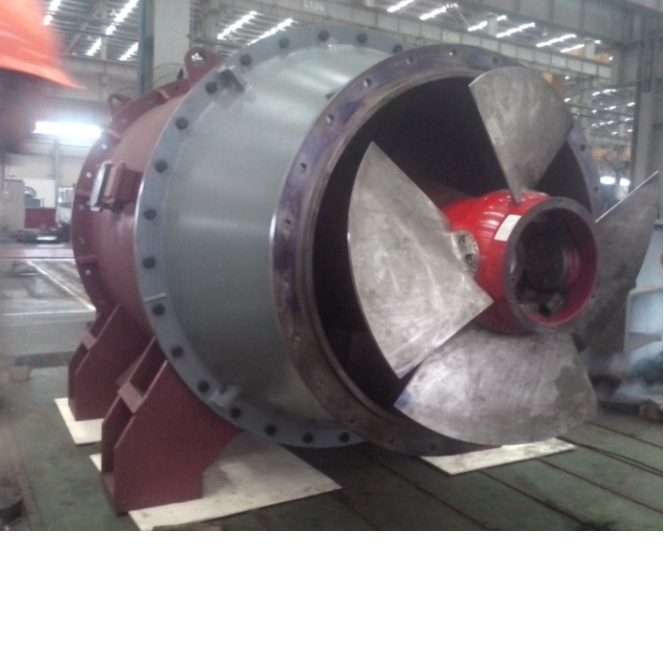
The power factor of asynchronous motors is as low as 0.8, especially low-speed asynchronous motors. The power factor changes with the load, and the power factor is even lower. The reactive power loss and power consumption are large. The traditional application is equipped with a power compensation unit, which virtually increases equipment investment and improves water conservation. Project construction costs.

The relationship curve of asynchronous motor efficiency, power factor, and load factor
Relationship curve between efficiency, power factor, and load factor of permanent magnet synchronous motor
2. Low vibration, low noise
Since the high-power permanent magnet motor for low-speed pumps has no high-speed running part, the motor itself has low noise and vibration. At the same time, the reducer and other transmission devices are eliminated, which eliminates the vibration and noise of the reducer and other transmission devices and makes the entire transmission system vibrate, lower noise.
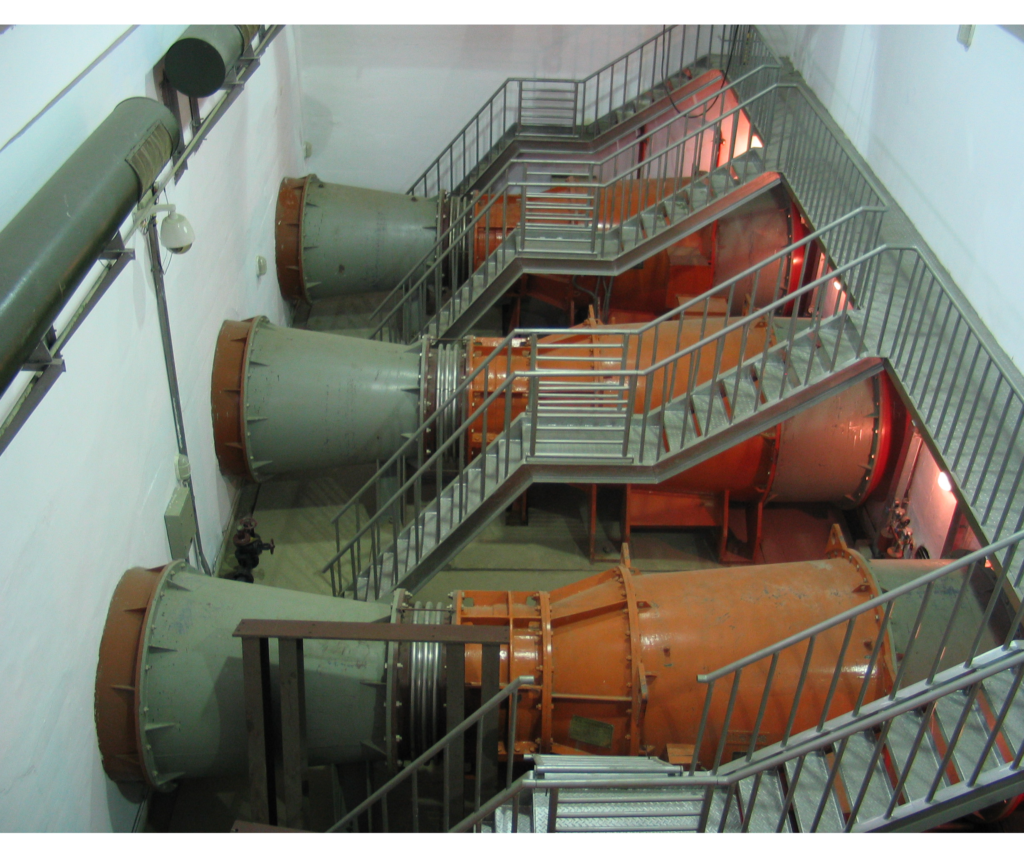
3. Moisture-proof and durable
High-power permanent magnet motors for low-speed pumps use stator potting technology to completely seal the stator windings in the potting glue. This technology greatly improves the insulation performance and moisture resistance of the motor windings, is conducive to the heat dissipation of the motor, and keeps the motor warm. It has a lower rise and better moisture resistance, making it more suitable for water-conservancy applications such as submersible pumps. Compared with traditional asynchronous motors of the same level, it has a longer service life.
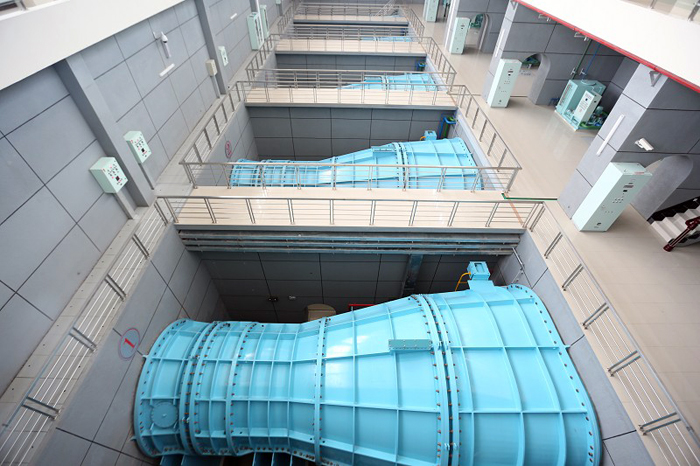
4. Safe and reliable
The high-power permanent magnet motor for low-speed pumps adopts a direct drive structure, eliminating the need for a reducer. It has small mechanical losses, fewer failure points, and safer and more reliable system operation.
In the structure of an asynchronous motor with a reducer, the motor drives the gear to run at high speed, which causes great mechanical wear and tear. The gear part is easily damaged and has many fault points, so it needs to be updated and maintained regularly.
5. Easy to control
It adopts a special control system for low-speed and high-power permanent magnet motors, which has convenient control, complete fault protection functions, and safe and stable system operation. It has multiple control modes such as remote control and local operation, and has a high degree of automation.
6. Small size, easy to install and maintain
It adopts a permanent magnet direct drive structure without a reducer, is smaller in size, and takes up less space. The structure is simple and the equipment installation is more convenient. There is no gearbox part, which saves lubricating oil and requires little equipment maintenance.
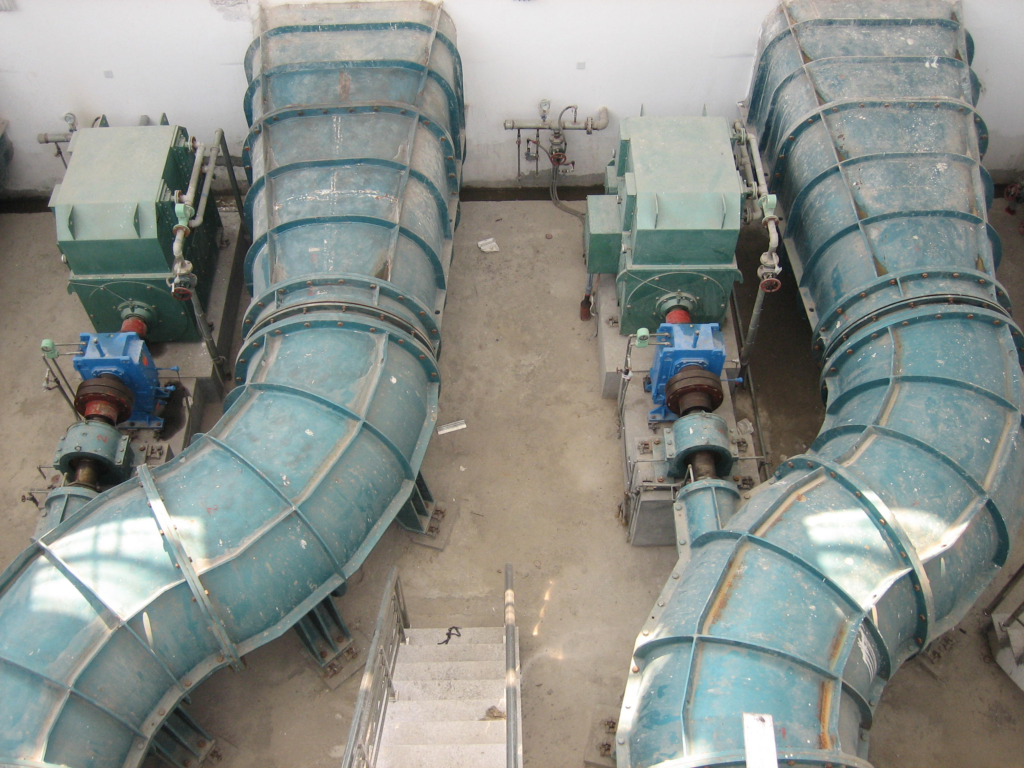
7. Excellent materials
It uses NdFeB rare earth permanent magnet materials with high magnetic energy product and high coercivity, H-class high-strength polyesterimide enameled wire, and high magnetic permeability cold-rolled silicon steel sheets. It adopts the latest production and processing technology to have a compact structure and low heat generation. The rotor adopts a patented combined IPM structure, which has the characteristics of a wide weak field speed regulation range and strong resistance to demagnetization.
Install a high-sensitivity positive temperature coefficient thermistor to monitor the motor temperature to ensure safe use.
It is driven by a permanent magnet dedicated non-inductive frequency converter, which has a small starting current, no impact on the load, simple operation, reliable performance, and safe and stable operation.
Success cases
The low-speed pump products designed and produced by our company have been successfully used in Shanghai water conservancy projects and have been well received by users.
Compared with the original solution of this project (asynchronous motor), the high-power permanent magnet motor for a low-speed pump has the advantages of a good energy-saving effect, small effective motor volume, large flow, high efficiency, compact structure, low noise, and vibration, etc.
The application prospects of high-power permanent magnet drive systems for low-speed pumps in water conservancy projects.
The following types of pump stations all use low-speed pumps (below 500r/min), and the advantages of choosing a high-power permanent magnet drive system for low-speed pumps will be far greater than the asynchronous (synchronous) low-speed motors and asynchronous (synchronous) motors of the same power commonly used today. Motor + reducer solution.
Our company can now design and produce high-power permanent magnet drive systems for low-speed pumps with power ranges from 100KW to 3000KW, voltage ranges from 380 to 10000V, and rotation speeds below 500r/min according to customer needs. They are suitable for the following types of applications.
